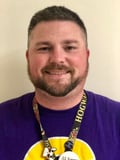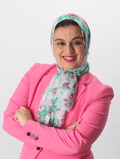We love to connect with our fellow teachers, and the Open Up Resource community is a family.
One question we often get is: “Where is the Reading?”
The EL Education K-5 ELA curriculum absolutely gives students access to reading. It just looks different than what’s typically seen in other curricula. Yes, it’s nice to have the colorfully tabbed resources with the basal and the guided reading. This curriculum doesn’t have this, so it may seem hard to determine where to find the reading.
However, this curriculum addresses the science of reading, the knowledge gap, provides support for differentiation of reading and helps build a love for reading.
The Science Of Reading [Justin Endicott]
When we use the phrase “Science of Reading,” we are referring to the methods and practices backed by research for literacy instruction. There is a vast body of research in this area and one thing is for sure: EL Education Language Arts Curriculum follows the science of reading. I feel like I could go on for days with this topic, but when centered around opportunities for students to engage in rich and meaningful texts, the curriculum is flowing.
Research tells us that students should be reading grade-specific, complex texts daily. Research tells us that students should engage in a volume of reading centered around a topic. Research tells us that students should be reading books for pleasure that they pick out and it suggests at least 20 minutes daily for that. Finally, research tells us that students should read texts centered around a topic for the main lesson. So when asked, “Where is the reading?” my answer would be “It is in the above scenarios.”
As will be mentioned several times below, we are used to labeled pieces of a basal program and we need to be comfortable with the seamless approach to literacy instruction this curriculum provides.
Take a module, for example. Daily, students are hearing complex text read aloud or reading complex text, they are working in groups to read texts and answer questions, they are working in skills block and ALLBLOCK with fluency passages, they are decoding words and reading decodables in skills block, or they might be checking out one of the 20+ titles provided for volume of reading options the curriculum provides. This is just a bird’s eye view of the many opportunities that we have for students to be reading texts with methods that all follow the science of reading research.
The Knowledge Gap [Justin Endicott]
For the past couple of years, educators across America have been engaging in a discussion about The Knowledge Gap. I remember being taught in units centered around topics and my education started in 1983, so that tells you that our veteran teachers were onto something. However, somehow we went away from that and teachers began teaching a “story of the week.”
This method left a gap that we tried to immediately remedy with isolated skills-based instruction. We know that this doesn’t work for us and we have to shift our teaching to close the knowledge gap. One way this is done is by teaching content-based literacy. EL works to close this gap through the beautiful topics we get to teach with our module lessons.
Within each module, students are hearing and reading complex texts centered around a topic. Within the modules, students are reading texts and articles for close reading, reading anchor texts, and working in collaborative groups to re-read texts. Students are expected to read on a daily basis in one of the above categories while building knowledge about the topics we are teaching.
Students in all grades will also be expected to read fluency passages which are centered around the topic. This is yet another example of how the curriculum is married and woven together tightly. This is not isolation teaching, this is teaching literacy as it was intended. Like gears in a motor when one gear moves, the others gears turn automatically.
Differentiation of Reading [Sarah Said]
Now, I come from the world of linguistic differentiation. Typically, when a curriculum resource comes out to the public, and there are supports for Multilingual Learners, those supports water down content and support more of “an old school pull out model.”
I say, we’re not in 1980 and shouldn’t give our students support that looks like support in the 1980’s. Do we still listen to cassettes on a walk-man? The way that we used to support students for language support was using either a different program for students or a portion of the curriculum that was not a grade level standard.
EL Education’s K-5 Curriculum supports teaching language learners at grade level standards. There are notes for differentiation of language that helps students comprehend text – rather than change the text.
When thinking about struggling readers that are not language learners, we need to still expose them to text at grade level but have them practice with text at their instructional level as well. Skillsblock and All block resources allow students to have access to grade level text with lessons that are whole class lessons, but there are also differentiated supports that expose students to texts at their reading level. Students need to have exposure to both as they do in modules and “the blocks” in order to grow as readers.
Building a Love For Reading [Sarah Said]
The way that the curriculum is structured allows students to discover books of their choice during accountable independent reading. How a teacher runs accountable independent reading is their choice.
I chose to work with small groups at times and have them reading the same book (with small sets of books I’ve acquired through grants and donations) to use for accountable independent reading with small groups. At my school, we call these groups book clubs. We also have structured discussions about the books and gear conversations towards ALL block learning targets. Sometimes, books are aligned with module themes and sometimes they are not. You can also do this digitally with Epic accounts. Students can also read on their own and discuss texts with a group as well.
The purpose of this is to have students read at their instructional level and enjoy reading. Give time to students to choose books and also talk about books in your classroom. Yes, it’s difficult to find time in our school schedules, but we have to be creative about how we do this so that we can help our students grow.
At the end of the day, we must always remember to uphold the integrity of the curriculum and never alter the four Ts. However, it is so important to remember we are also the drivers of the curriculum. While we have taught this curriculum for the past five years, we still do things differently each year. For example, I get many wonderful ideas from HIVE that I regularly incorporate. Additionally, the needs of my students change and it may be that I need to assign additional fluency pages so that we have them weekly, or I may see they need a literature circle (as Sarah mentioned above) with a fun book.
The sky's the limit, don’t place yourself in chains.

Justin Edicott
@endicottjustin1
Justin Endicott is a 4th/5th grade ELA teacher, Open Up Resources Community Coach and ELA Facilitator for Teaching Lab. Reach out to him and other Community Coaches on the EL Education K-8 community Facebook page, via email and on Twitter.
 Sarah Said is the Director of Language and Equity Programs at an EL Education School in the Chicago Suburbs. In her role, she oversees support programs for Multilingual Learners, works with others to create a community that fosters success for students from the diverse communities her school serves, helps strengthen school to community outreach, and coordinates Title grants. In the past, she has been a Director of ELL, Dean and Curriculum Coordinator. In addition to her role in her building, she is a contributor for ELL Confianza and has written a variety of blog posts online. She is a member of the #ELLChat and #ELLchat_bkClub where she helps advocate for Multilingual Learners. Follow her on twitter: @MrsSaid17
Sarah Said is the Director of Language and Equity Programs at an EL Education School in the Chicago Suburbs. In her role, she oversees support programs for Multilingual Learners, works with others to create a community that fosters success for students from the diverse communities her school serves, helps strengthen school to community outreach, and coordinates Title grants. In the past, she has been a Director of ELL, Dean and Curriculum Coordinator. In addition to her role in her building, she is a contributor for ELL Confianza and has written a variety of blog posts online. She is a member of the #ELLChat and #ELLchat_bkClub where she helps advocate for Multilingual Learners. Follow her on twitter: @MrsSaid17

